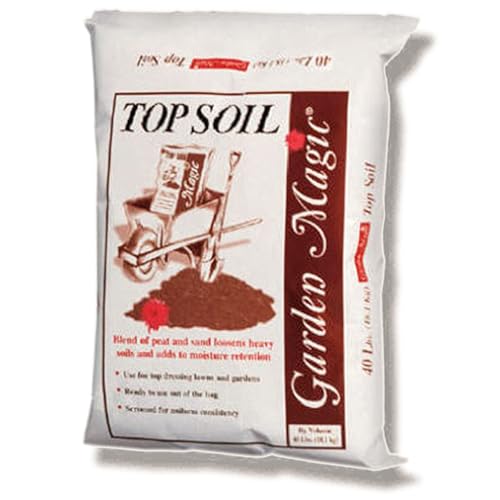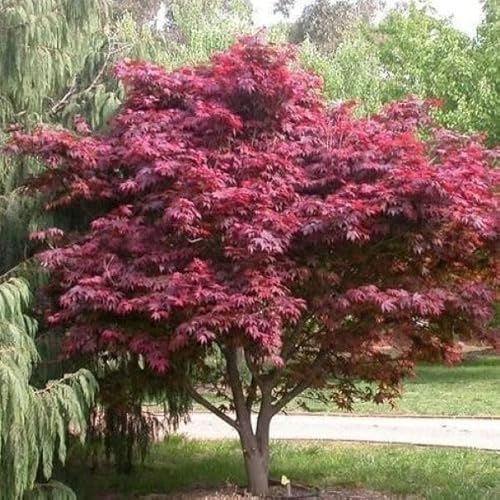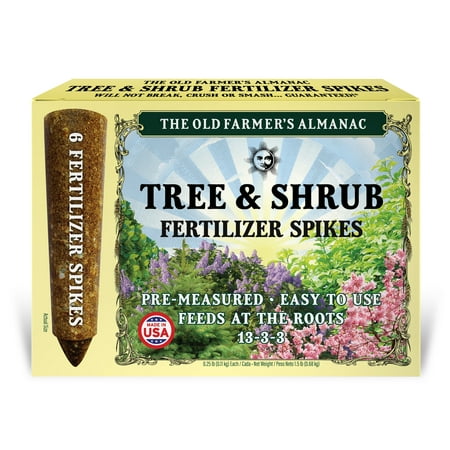Can you change the color of Japanese maples? Here's what actually affects their vibrant foliage, and what you can do to help
From fiery reds to golden yellows, here's what determines the color of Japanese maples
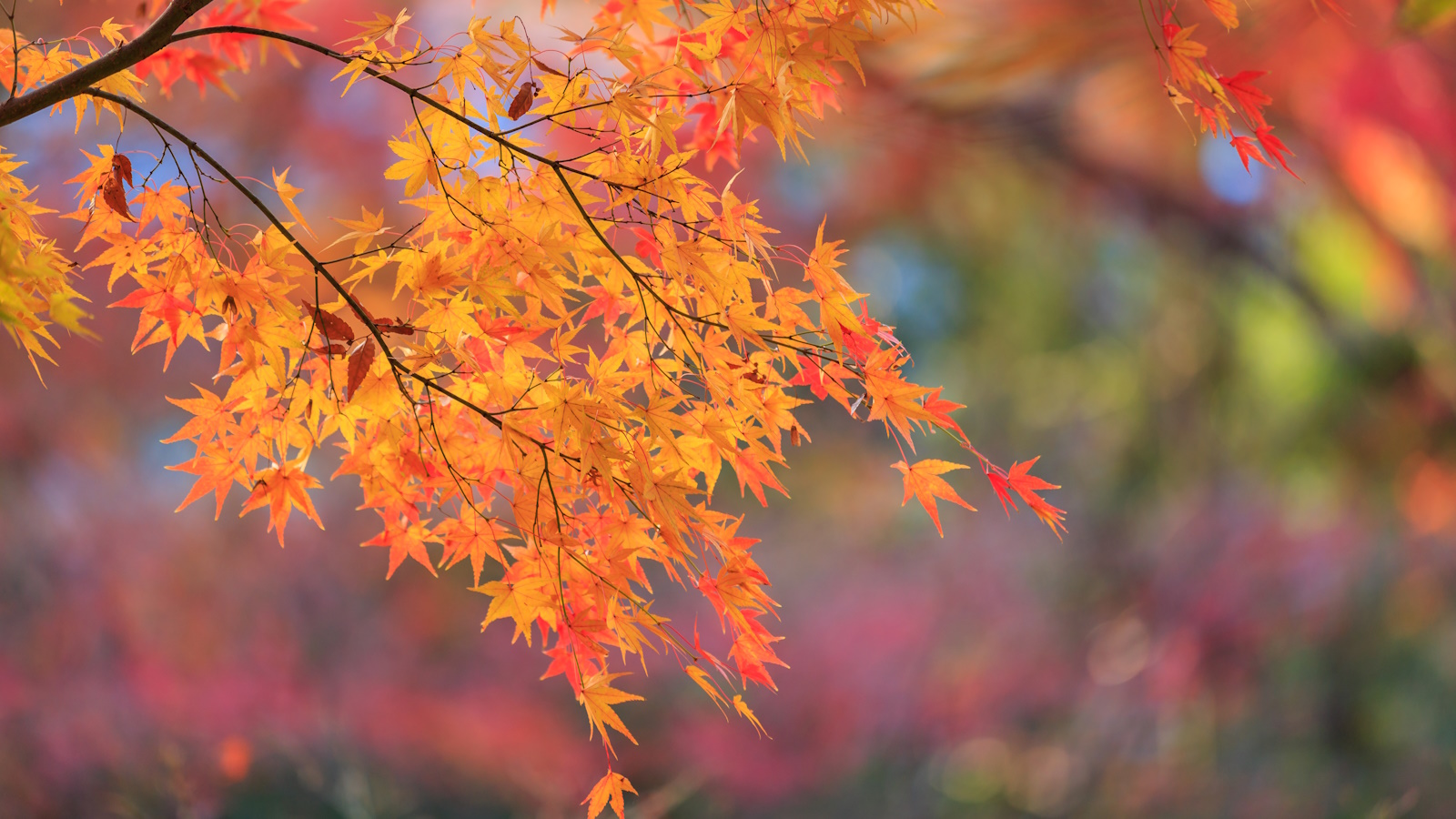

I have grown Japanese maple trees in every sort of setting, from shady woodland beds in South Wales to sunny patios in Italy. And, one question that I always seem to get asked is: how do I change the color of Japanese maples?
We all want those deep crimsons, honey golds and flaming oranges that elevate a space. But here’s the inconvenient truth: you can’t really change a Japanese maple’s color. Unlike hydrangeas, their leaf shade is written into their genetic code. Feed them, mulch them, water them well, all of that will help with health, vigor, and perhaps the intensity of their foliage, but a red-leaved variety will stay red, and a green one won’t suddenly turn scarlet.
But, if this isn’t the answer you hoped for, don’t fret, as I have plenty of recommendations for a fiery cultivar to add to your plot this year. Here’s everything I know about encouraging healthy, vivid foliage, and the best Japanese maple trees worth adding to your garden. Because why not treat yourself to a maple that’s guaranteed to put on a show?
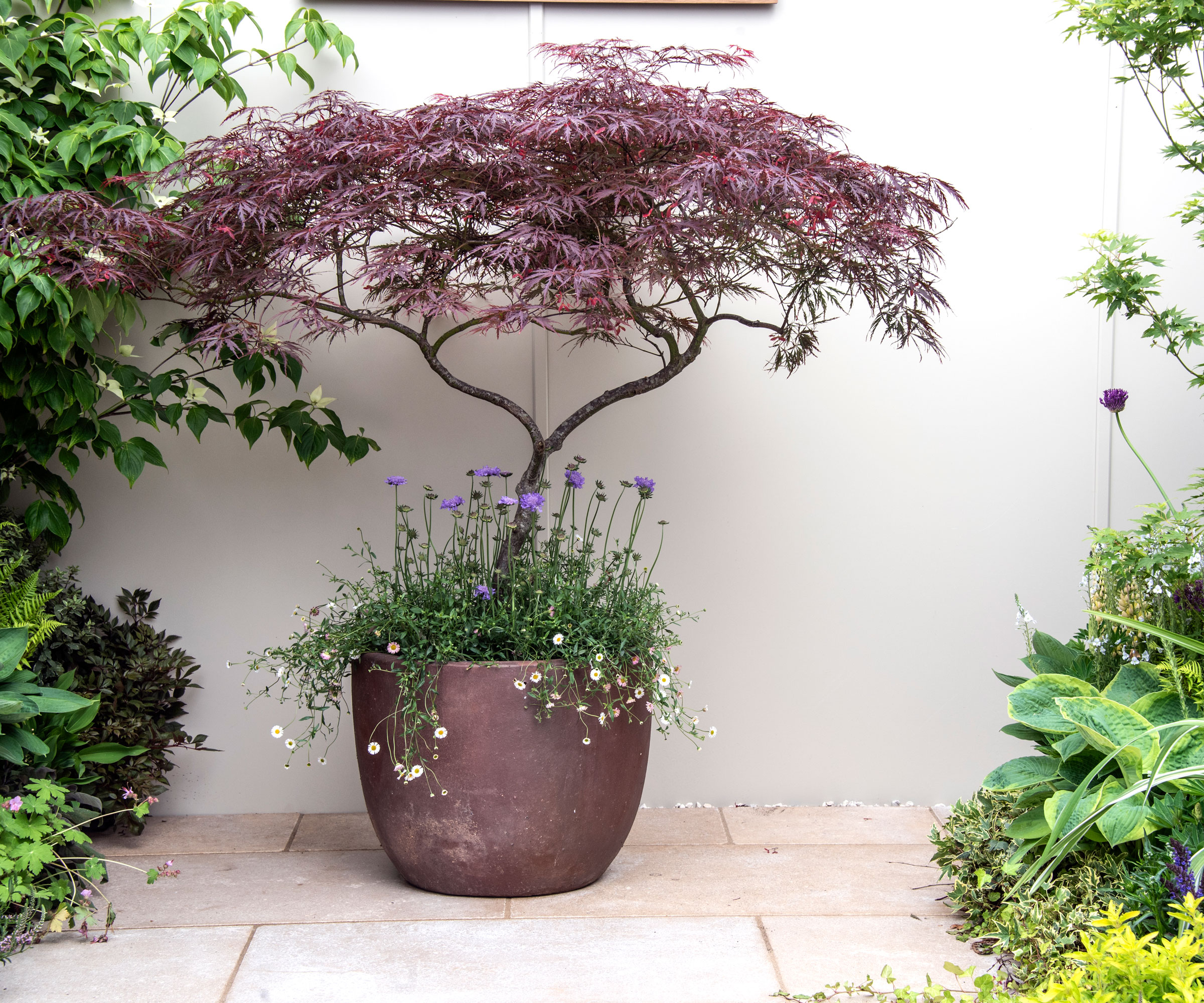
Can you change the color of Japanese maples?
Whether you grow Japanese maples in pots or borders, you may be wondering how you can change or enhance their color.
And, while you cannot alter the genetic make-up of these woodland plants, you can ensure that you are hitting some key growing requirements to ensure that the foliage is as zingy and vibrant as possible this year.
Here's everything I know about the color of Japanese maples after several years working as a professional gardener.
How to promote healthy trees and vibrant foliage?
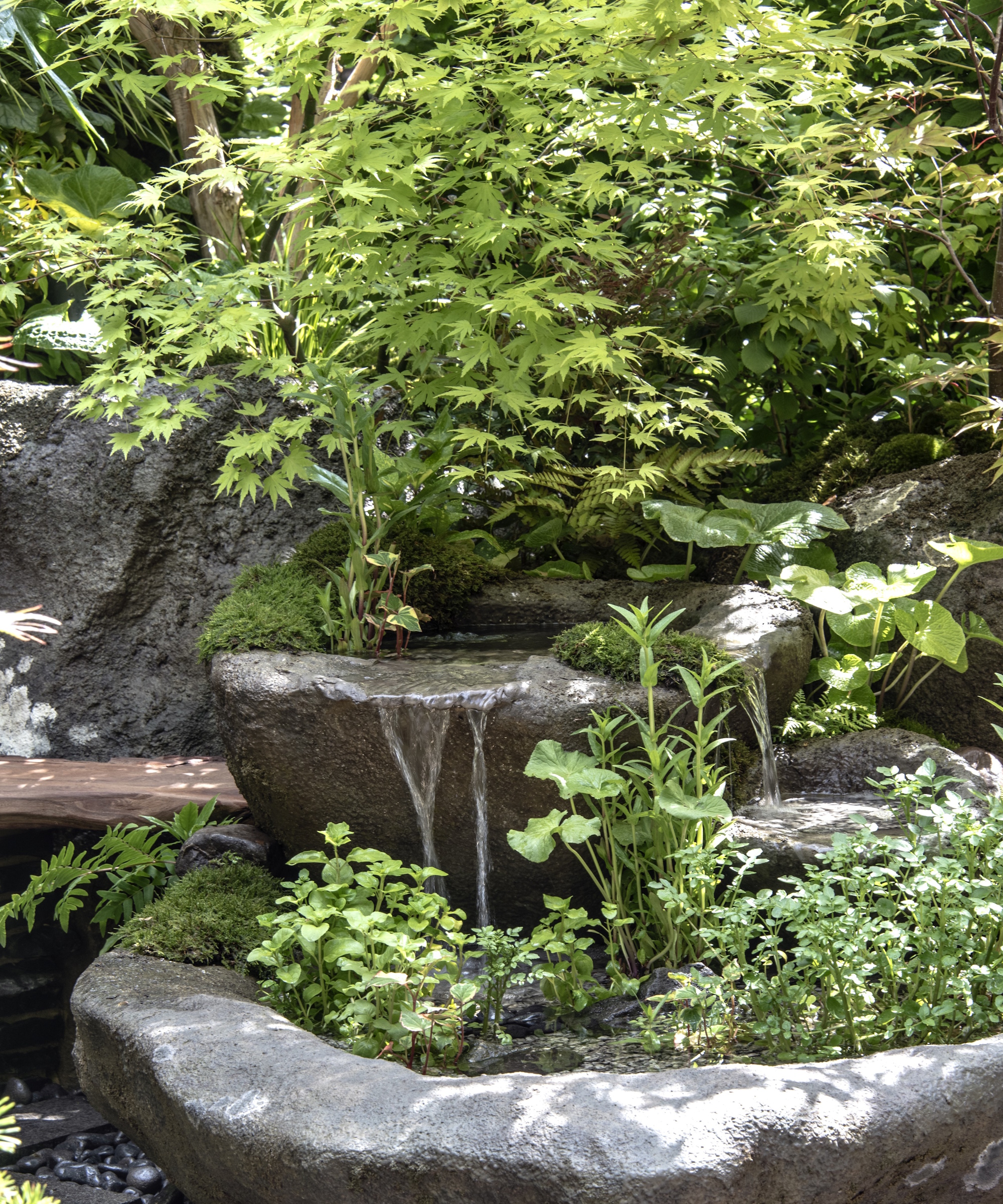
I’ve lost count of the number of times I’ve been asked if you can change the color of Japanese maples. And the truth is... not really.
Design expertise in your inbox – from inspiring decorating ideas and beautiful celebrity homes to practical gardening advice and shopping round-ups.
You can’t magic these low-maintenance trees from green to flaming red by any alchemy or by fertilizing Japanese maples. Leaf color is in the tree’s DNA. But you can help your tree put on its best show with the right growing conditions.
It all comes down to senescence, which might sound a little too technical, but don't fret. It is best understood as the natural decaying and winding down before dormancy.
As August folds into September, chlorophyll (the green stuff found in the leaves that most of us learned about in school) starts to break down. This process then allows other colors to take center stage as the weather dips.
To help? Water consistently during the warmer months, and also to learn how to mulch Japanese maples in summer.
Try something like this organic Back to the Roots mulch available from Amazon.
Mulching is important and will help your woodland tree to retain moisture and prevent the leaves from wilting or turning crispy (there is no saving brown leaves once they turn crispy).
If you are growing a maple is in a pot, I would suggest moving it to a spot with morning sun and afternoon shade. Red, purple, and dark-leaved varieties, I have found, need a good dose of sun to hold their color, whereas paler or the striking variegated types prefer dappled shade.
And remember, some things are beyond your control, namely, the weather. In cooler zones, like zone 5, fall colors might be bolder following a chilly few weeks in early fall, whereas in warmer regions, there may be no change, or a less noticeable change. Just enjoy your maple, whatever it decides to do.
Best Japanese maples for fiery foliage
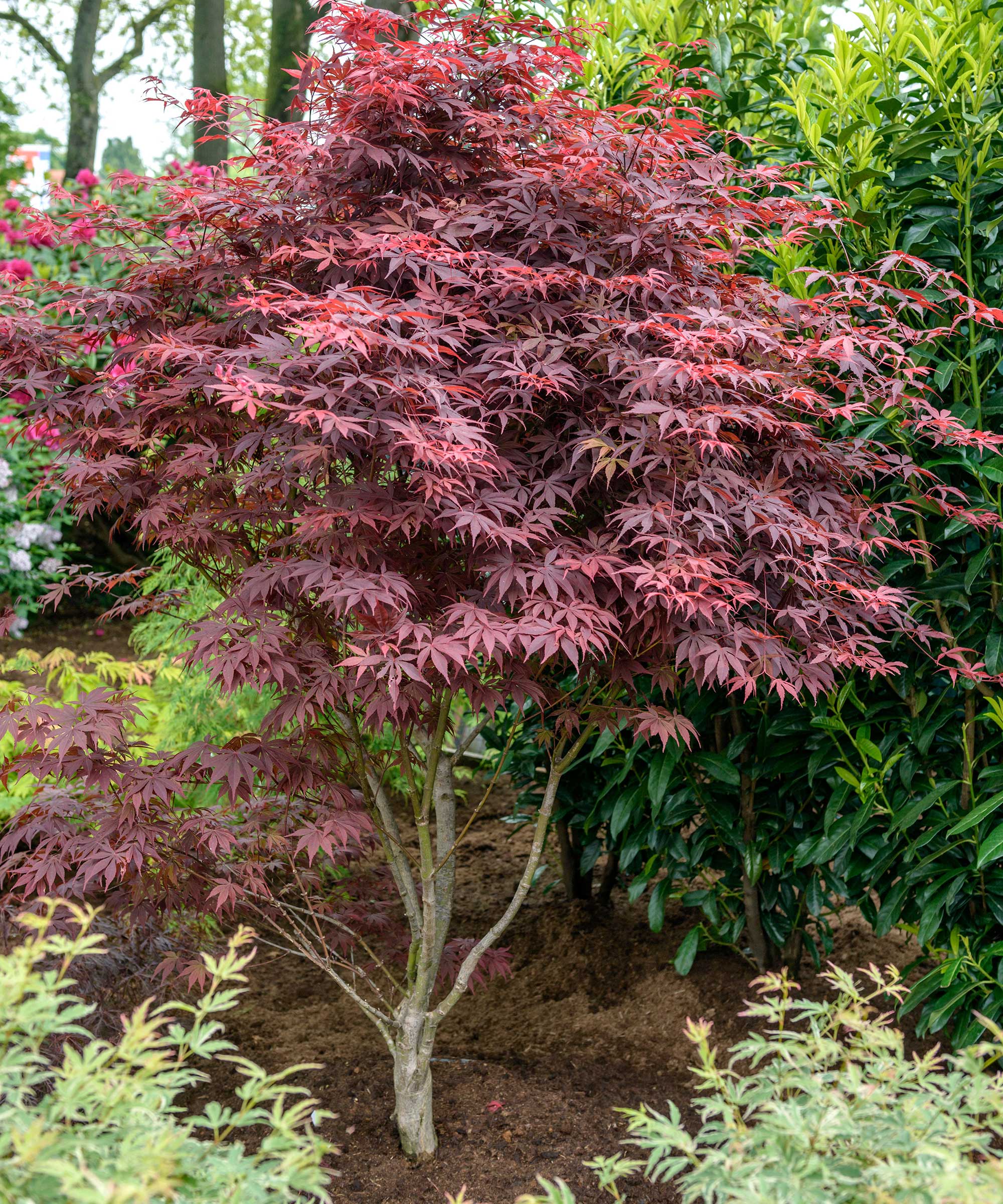
So, while you can't change their color, most varieties of Japanese maples should put on a pretty good spring, summer and fall show.
I have grown many different types, but I have always had a soft spot for 'Sango-Kaku', with its golden yellow leaves that look impressive when backlit by the low sun in fall.
For crimson foliage, I love 'Tamukeyama', but the classic Acer palmatum ‘Bloodgood’, with live plants available from Walmart, is always a good choice, with deep burgundy leaves that are hard to beat. In my experience, it holds its color well through summer, especially if given light afternoon shade.
Acer palmatum ‘Osakazuki’, live plants available from Amazon, is another striking option. It has modest green leaves through spring and summer, but come fall, it is a blaze of scarlet red that rivals any tree in the garden. It’s hardy, reliable, and brilliant if you are seeking small trees that thrive on neglect.
FAQs
Why does my Japanese maple have brown leaves in summer?
None of us wants to see brown, crispy leaves on our maples during the growing season. While this might be expected in October or November, during the summer this can be caused by leaf scorch (from too much sun or not enough water).
I have also known maples to turn dry and crispy from wind damage, particularly near the coast, as they do not respond well to salt air.
Ensure that your maple is in a part-sun spot, protected from harsh afternoon sun, kept out of the wind, and be sure to keep the base well watered during warm spells.
If you are worried about the quality of your soil, mulching will help, but so too can feeding your trees once or twice during spring and summer, using something like this Happy Frog Japanese maple feed from Amazon. Just be sure to follow the instructions as per the packaging.
For more information, see our guide on how to revive old Japanese maples, with tips on pruning and feeding.
Shop tree accessories

Thomas is a Content Editor within the Gardens Team at Homes and Gardens. He has worked as a professional gardener for both public spaces and private estates, specializing in productive gardening, growing food and flowers. Trained in Horticulture at the Garden Museum, he has written on gardening and garden history for various publications, including The English Garden, Gardens Illustrated, Hortus, The London Gardener and Bloom. He has co-authored a Lonely Planet travel book, The Tree Atlas, due out in 2024.
